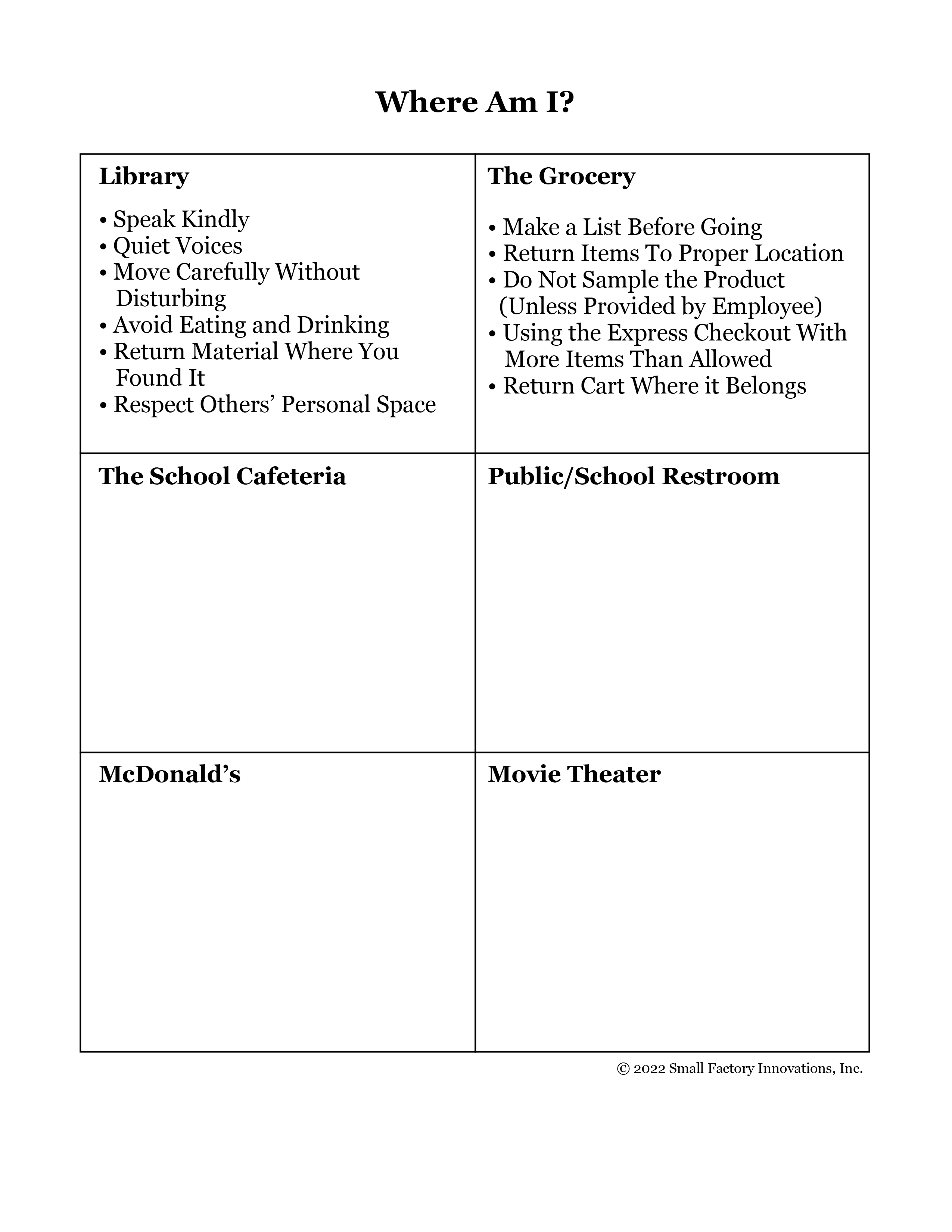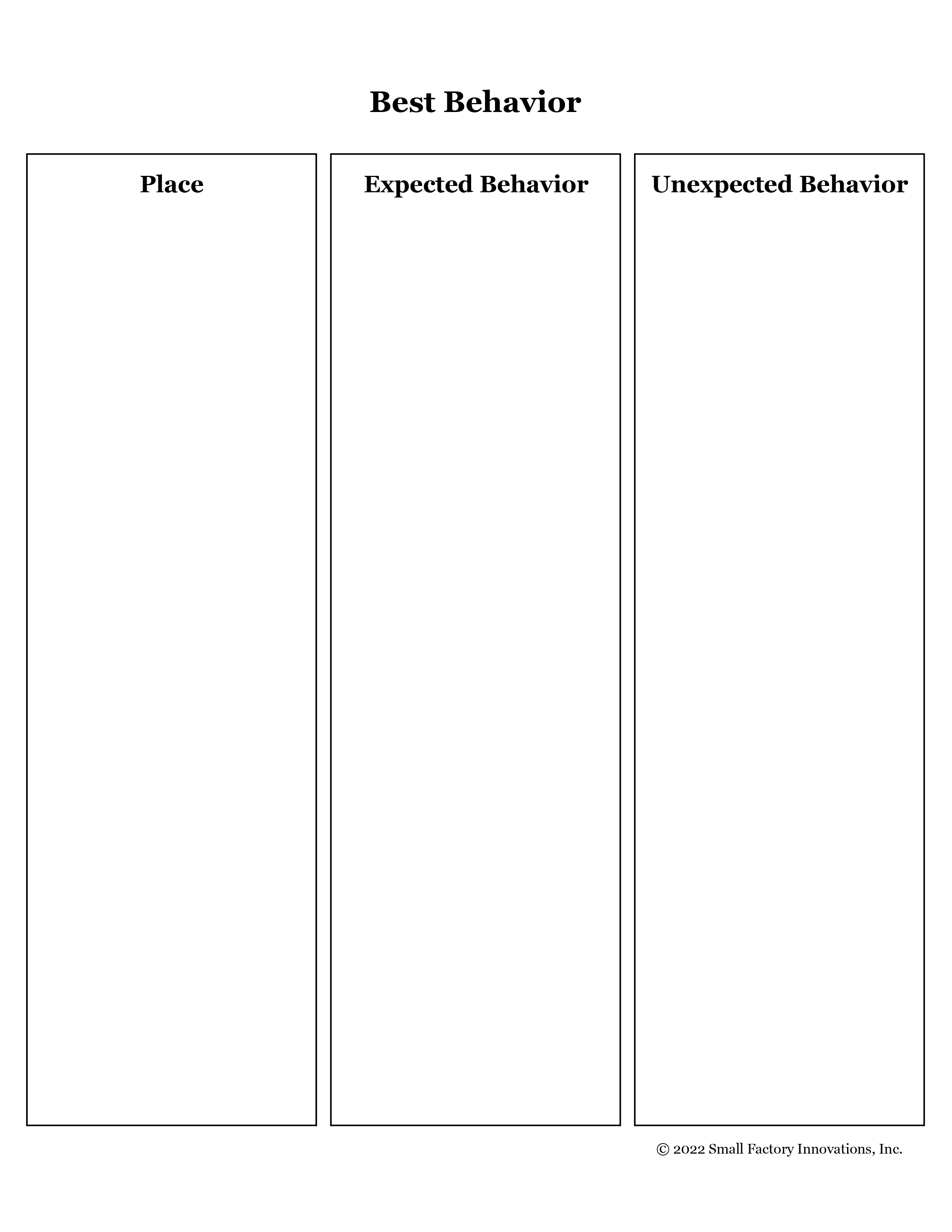
Improve life outcomes
Jumpstart: Respecting Property - Universal
Foundational
CASEL Competency Focus: Relationship Skills
Time: 20-30 minutes
Materials: Board/Chart Paper, Writing Utensils, Where Am I? Handout (Included), Comic Strip Handout (Included)
Objectives:
1. In Their Own Words, State the Definition of Respect.
2. Identify Respectful Behaviors.
3. Apply Personal Experience or Acquired Knowledge to Exhibit Expected Behaviors Based On the Specific Location.
Definitions of Key Terms:
- Having Respect: Having a good feeling about someone because of how they treat others.
- Showing Respect: Showing care, concern and kindness for others; often listening and following directions.
- Consideration: Careful and thoughtful actions toward a person or property.
- Location: Place or position.
- Consequence: What happens immediately after a behavior; consequences can be both positive and negative.
Lesson Procedures
Introduction: There are many aspects to respect. It is important to show respect not only for people, but for locations and property as well. In this lesson, students will be introduced to the concept of showing respectful behaviors based on the location of the individual. In life, as in school, there are rules...LOTS of rules. Often rules are posted/written or spoken. We often review rules and procedures at school. Most of us have been taught societal “rules” that must be followed to keep us out of trouble, especially with law enforcement. From the time we are little, we are also exposed to a different set of rules, “unwritten rules.” We learn these unspoken rules by being coached and observing real life scenarios and experience in a variety of locations/settings. Following the theme of unspoken rules, we must also introduce the concept of expected behavior and unexpected behavior. There are consequences for every action. These consequences can be negative or positive.
Game Time: Where Am I?
The above concepts are reviewed in this interactive game.The teacher chooses a location/place students are likely to visit routinely. Based on the chosen location/place, the teacher will give students “clues” (expected behaviors) to help students make inferences using context clues. For younger students, complete the cards in small or whole groups. Have older students complete cards independently and think of their own locations/places with expected behaviors. Extend the activity by discussing consequences and unexpected behaviors for each location.
Application: Best Behavior
In this activity students will show what they know by completing the activity sheet included in this lesson. First, students will choose a place or location. In the first box, have students illustrate using words and/or images to represent the place. The second box is to illustrate expected behaviors for the location, while the third box is to illustrate unexpected behaviors.
Try it out!
Have students pick a place they will visit throughout their day. Instruct students to observe with intent a person in the place. What behaviors do they notice? Are the behaviors expected or unexpected for the location? Was there a clear consequence based on the person’s behavior? If yes, what was it? If no consequence was evident, hypothesize a possible outcome.

